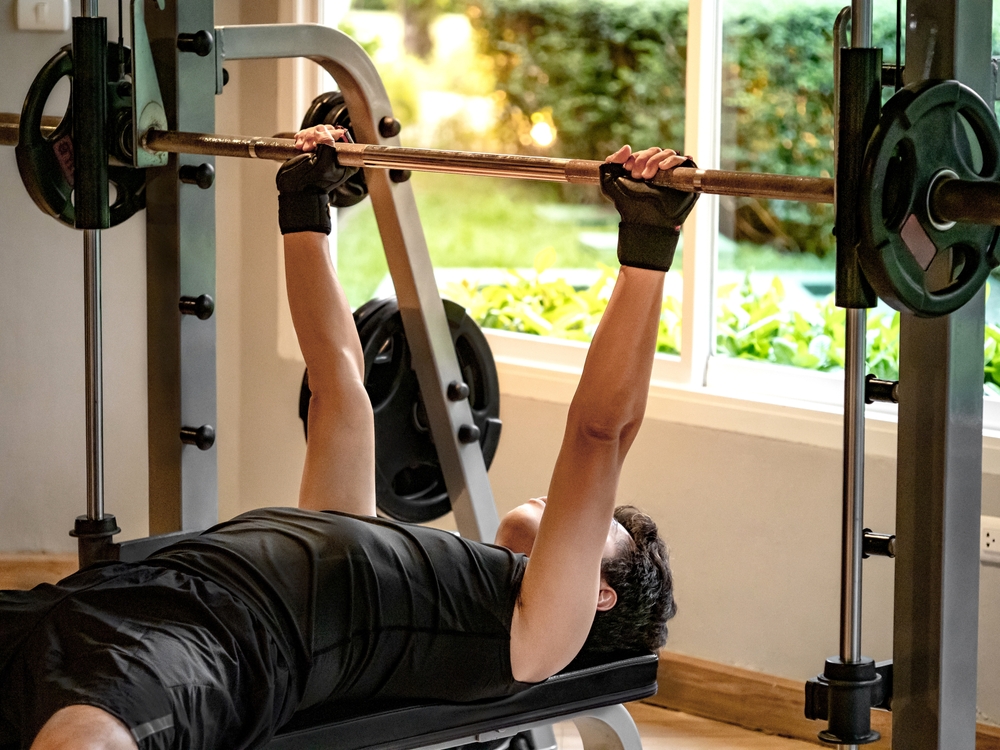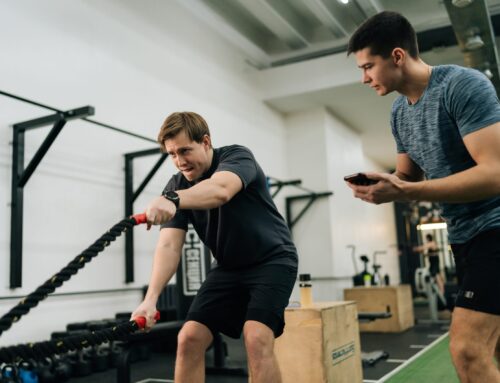Compound and isolation movements in exercise can play a key role in achieving overall strength and functional fitness. But what separates the two from each other, and which movements should you focus more on in the gym based on your specific goals?
The personal trainers at Carbon Performance want to guide you through the benefits of each, helping you to tailor your workout to meet your fitness goals!
Understanding Compound and Isolation Movements
Compound exercises are the powerhouses of the fitness world. These exercises engage multiple muscle groups and involve various joints, making them incredibly efficient. Think of the back squat, which works your quads, hamstrings, glutes, and even your core muscles, all at once. These multi-joint movements mimic real-life actions, making them not just a workout but a functional movement that enhances your everyday activities and targets major muscle groups.
On the other hand, isolation exercises focus on a single joint movement that targets one specific muscle group and promotes muscle activation. Picture the hamstring curl, where the sole focus is on your hamstrings. These exercises are ideal for focusing on specific muscles, enabling a more targeted approach to muscle development.
The primary distinction between compound and isolation exercises lies in the number of joints and muscle groups involved. Compound exercises engage multiple joints and muscle groups, whereas isolation exercises target a specific muscle, involving only one joint. Knowing this distinction helps create a balanced and effective workout routine.
Benefits of Compound Exercises
Compound exercises are a cornerstone of strength training and muscle building. They effectively build muscle mass, power, and strength, making them vital for overall fitness. When performing compound exercises, you’re not just working out; you’re engaging in functional movements that translate to real-life activities, improving your overall stability and coordination.
Another advantage of compound exercises is their efficiency. Engaging multiple muscle groups simultaneously, these exercises promote a higher calorie burn and enable you to lift heavier weights, accelerating muscle hypertrophy. This makes compound exercises particularly effective for those looking to build strength and muscle mass quickly while burning more calories.
Compound exercises can also make your workouts more comprehensive. Imagine performing a bench press; you’re not just targeting your chest but also your shoulders and triceps. This multi-faceted approach ensures that you get the most out of your workout routine, allowing you to achieve your fitness goals with fewer exercises.
Benefits of Isolation Exercises
Isolation exercises are key for muscle symmetry and targeted development, allowing for a focused approach that enhances growth in specific areas. For instance, barbell curls are ideal for building bigger biceps.
Isolation movements are also invaluable for correcting muscular imbalances. Isolating specific muscles helps even out muscle strength and flexibility, complementing compound movements. This approach ensures no muscle group or other muscle groups are overlooked, contributing to a balanced and symmetrical physique for the entire body.
Additionally, isolation exercises are often recommended for rehabilitation purposes. Their simpler movement patterns minimize strain on surrounding joints, making them ideal for beginners and those recovering from injuries. This makes isolation exercise a versatile tool in any fitness arsenal.
Choosing Between Compound and Isolation Movements
So, how do you choose between compound and isolation exercises? The answer lies in your fitness goals. If your goal is overall strength enhancement, then compound exercises will be your best friend. These exercises are time-efficient, working multiple muscles simultaneously and typically simulate real-life activities, making them beneficial for functional strength.
However, if muscle symmetry and targeted muscle growth are your goals, isolation exercises should be a staple in your routine. These movements allow you to focus on specific muscles, correcting imbalances and enhancing muscle definition.
A balanced workout routine ideally incorporates both compound and isolation exercises. Start with compound movements to build a strong foundation and finish with isolation exercises to target specific muscles. This approach ensures comprehensive muscle development and optimal results.

Best Compound Exercises for Strength and Muscle Growth
When it comes to compound exercises, the deadlift stands out as a comprehensive strength-building exercise. It activates nearly every muscle in the body, making it a staple in any strength training program. Here are some of the best compound exercises for strength:
- Squats target lower body muscles and contribute to overall strength. Be sure to throw in some weights for enhanced strength building!
- Dumbbell snatches target the quads, glutes, and biceps by squatting with a dumbbell in one hand, and snatching it up with your power in your lower body to lift it above your head
- Barbell bench presses are classic compound exercises that primarily target the chest muscles, shoulders, and triceps.
- Push-ups are equally versatile, engaging the chest, shoulders, triceps, and core.
Progressively increasing heavy weights, or progressive overload, is crucial for significant muscle growth during compound exercises. Incorporating more weight into these exercises can greatly enhance overall strength, build muscle mass, and functional abilities.
Best Isolation Exercises for Targeted Muscle Development
Isolation exercises are designed to target specific muscle groups, allowing for focused development and correction of muscle imbalances. Here are some isolated exercises to use for targeting muscle growth:
- Barbell bicep curls can help build bigger biceps.
- Lateral shoulder raises with dumbbells can be effective for shoulder development.
- Calf raises (seated or standing) can also help to develop and strengthen calf muscles and lower legs.
- Abductor machines also target the glutes and legs.
Combining Compound and Isolation Exercises in Your Routine
A balanced workout routine should incorporate both compound and isolation exercises to target muscle growth and specific areas effectively. Including both types of exercises can enhance overall muscle development and address muscle imbalances.
Experts recommend that combining compound and isolation exercises can lead to more balanced hypertrophy. By balancing volume for different muscle groups, you can create a more proportionate physique and improve overall muscle development.
Additionally, compound exercises enhance coordination and balance due to their varied movement patterns.
Common Mistakes to Avoid with Compound and Isolation Exercises
One common mistake is using compound and isolation exercises in the wrong order, which can lead to missing out on gains and risking injury. Begin with compound lifts when energy levels are high and finish with isolation exercises.
Maintaining correct technique while performing compound lifts is crucial to prevent injuries. For example, when performing an upright row, avoid elevating your upper arms above shoulder height to prevent shoulder injuries.
Another common risk is going too heavy too quickly and cheating movements, like letting momentum do the work during a lateral shoulder raise. Identifying and avoiding these mistakes can enhance the safety and effectiveness of your workout routine.
One way to ensure you are being safe and decreasing the risk of injury when working out is working alongside a personal trainer. Personal trainers, like the ones at Carbon Performance, can help not only with your form but also determine which weights you should lift based on your current health and strength. Working out with a personal trainer can be helpful to stay motivated, ensure your form is right, and prevent any accidents in the gym!
Sample Workout Routines for Compound and Isolation Movements
For beginners, it’s recommended to start with compound exercises like squats and deadlifts from a starting position, progressively adding isolation exercises once a solid foundation is developed. This approach ensures a balanced introduction to strength training.
Intermediate lifters should aim for 4 to 15 sets per muscle group each week, training each muscle at least twice. This balanced approach allows for continued muscle growth and development.
Advanced trainers typically require 12 to 20 sets per muscle weekly and may benefit from 15 to 25 sets for certain muscle groups. Tailoring workout routines to individual fitness levels and goals is crucial for achieving diverse muscle recruitment through training programs and fitness goals.

How Often Should You Perform Compound and Isolation Exercises?
Isolation exercises can effectively reduce muscle recovery times, enabling more frequent training of specific muscle groups. This allows for more targeted muscle development.
Start with compound exercises when energy levels are high, followed by isolation exercises.
Strategically pairing compound and isolation exercises can enhance muscle recovery and prevent fatigue.
Build Your Strength with Carbon Performance
To sum up, both compound and isolation exercises offer unique benefits that can help you achieve your fitness goals. Compound exercises are ideal for building overall strength and muscle mass, while isolation exercises target specific muscles and correct imbalances. Incorporating both types of exercises into your workout routine ensures comprehensive muscle development and optimal results.
If you’re ready to take your current fitness routine to the next level, then join in on the exercise happenings at Carbon Performance. With multiple locations in the southeast, you will be sure to find the right location and fitness classes for you.
Connect with us today for a consultation and to learn more about our amenities and class options. We look forward to hearing from you!





